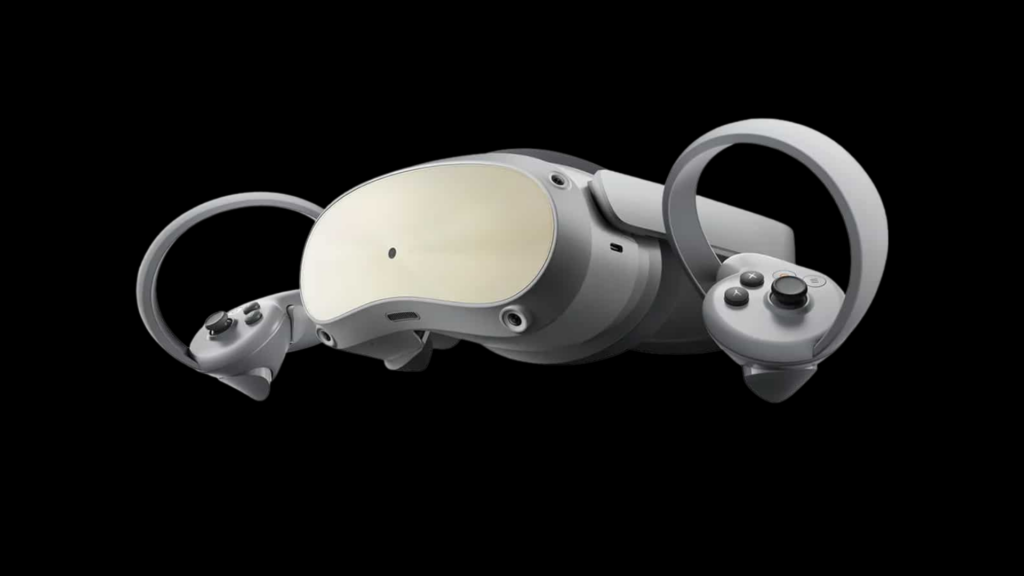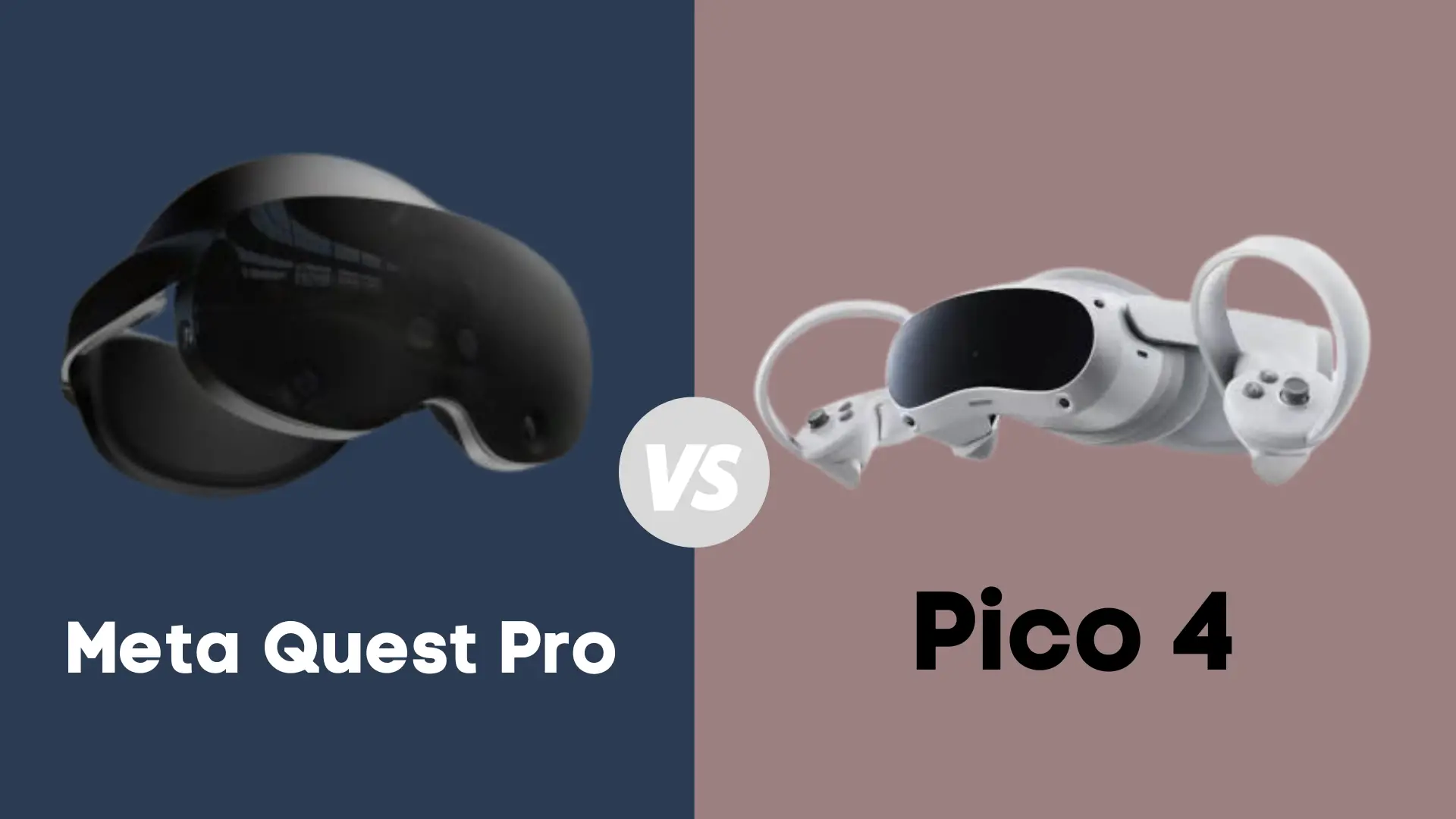Pico 4 Enterprise Review: Competition for Quest Pro?

Virtual reality has proven to be a fairly lucrative industry, with multiple potential demographics for devices to be catered to. In general, the biggest market for virtual reality can be described as either game players looking for more immersion, or casual users looking for the thrill of virtual reality. However, one demographic that has been growing is one that seeks to use virtual reality for practical purposes.
The Pico line of virtual reality headsets is one competitor in this industry, specifically having a lot of popular in some places in Europe and Asia. The most recent headset, the Pico 4, has recently had a follow-up to it announced, called the Pico 4 Enterprise. This headset is meant for the latter audience, the one mainly interested in virtual reality’s practical purposes. But which headset is best for your needs? And how does the Pico 4 Enterprise compare to its competitor, the Meta Quest Pro?
What is the Pico 4 Enterprise?
If you’re looking to buy either a Pico 4 Enterprise or a Meta Quest Pro, the most important question to ask is: why? This isn’t to denigrate either device as much as it is to point out that these devices are made for a specific niche. Both devices are meant to be used for business purposes or practical purposes, more so than for gaming.
One nice advantage behind the Pico 4 line of headsets is the fact that apps and games made for its predecessors, the Pico 3 and Pico 3 Pro, will also work on the Pico 4 and Pico 4 Enterprise.
Even when comparing the Meta Quest Pro to the Pico 4 Enterprise, both of which are tailored for business use, there are differences to consider. For example, where the Meta Quest Pro is aiming to win over individuals and organizations alike, the Pico 4 Enterprise appears to be courting organizations exclusively in its outreach. This is a sensible approach, considering the fact that the headset is rather expensive, and the Pico 4 is already an adequate headset for individuals in most cases.
Now, granted, that doesn’t mean that organizations are the only ones who stand to benefit from the technology. For example, someone who has aspirations of working in a certain industry may want to use the headset for training and simulation apps. Another angle is for contract workers who may still want to use face tracking and eye tracking if they’re ever included in virtual meetings.
Pico 4 and Meta Quest 2
The Pico 4 was actually released only very recently, while the comparable headset, the Meta Quest 2, came out roughly two years ago, back in October 2020, as the Oculus Quest 2. The Meta Quest 2 is still the preferred Meta virtual reality headset, mainly due to the fact that it’s more powerful than its predecessor, and the Meta Quest Pro has a smaller niche it’s selling to.
Pico 4 vs. Pico 4 Enterprise
If you’re debating whether to buy a Pico 4 or Pico 4 Enterprise and are mainly in it for the games, go with the Pico 4. The Pico 4 Enterprise is, using no uncertain terms, meant for business purposes. Sure, you COULD play video games using the Enterprise model, but it would be a waste of money if you didn’t have business use in mind at all.
The Pico 4 Enterprise includes significant technological advancements compared to its predecessor. Perhaps the most noticeable of these changes is the eye and face-tracking technologies included with the headset. The idea behind the implementation of these technologies is that, if you have to do a virtual meeting, you would – in theory – be able to have a more personable meeting than you would if you used a Pico 4 instead. Being able to track your eyes and facial movements in more complex ways helps display more of yourself to people who see you.
As far as performance goes, the Pico 4 and Pico 4 Enterprise work largely the same. Both devices use a Qualcomm Snapdragon XR2 processor, and they have a resolution of 2,160 x 2,160 per eye. Additionally, they have pancaked lenses, which have a 105-degree field of view. However, there is one thing that differs, namely that the Enterprise has 8GB of LPDDR5 memory, which is faster than the Pico 4’s LPDDR4 memory.
The difference between Pico 4 Pro and Pico 4 Enterprise
Early on, some reports indicated that the Pico 4 Enterprise was actually going to be called the Pico 4 Pro. However, the company later revealed the Pico 4 Enterprise, which would be used for the product in the Middle East, Europe, Africa, India, Australia, and New Zealand. However, there is one exception: instead of the Enterprise, Chinese consumers will be sold the Pico 4 Pro.
Whereas the Pico 4 Enterprise is aimed at business purposes, the Pico 4 Pro is meant to be used by consumers primarily. The Pico 4 and the Enterprise model both have 256GB of storage, while the Pico 4 Pro has 512GB. For reference, the Meta Quest Pro also has 256GB of storage.
Privacy
There are a lot of things to appreciate about the Pico line of headsets over the Meta line, and that’s the fact that it doesn’t require any personal identification in order to use them. One of the biggest points of criticism surrounding the Meta line of headsets is the fact that you can’t just use it anonymously. Instead, you need to sign in to it with a Facebook account. As a result, if you don’t have one or are intending to get rid of it, you either have to not use your Meta device, or make an account just for Meta Quest Pro use.
Going with either the Pico 4 or Pico 4 Enterprise, what I’ve seen suggests that you may not have to have an account with Pico. It makes sense that people would not feel comfortable having an account under Meta, considering how much controversy Meta has faced with respect to how they handle customers’ private data and security. Hopefully, Pico doesn’t make the same mistakes that Meta did.
It doesn’t end in just having to create an account to use it, as there are other kinds of apps and websites that seek to get users’ data some way or another. There is also another feature to the Enterprise called the Pico Business Suite. According to Pico Interactive, this platform is meant to provide users with a safe and secure way through an enterprise-level operations system. The platform has three functions:
- Streaming mode, which allows you to transmit data both to and from the headset
- Sync mode, which helps manage both software and digital assets
- Kiosk mode, which allows for multiple virtual reality devices to be connected during live streams or automatic viewing.
Pico Interactive has indicated that they intend to do everything they can to avoid potential data breaches, though some have expressed skepticism about their intent to do so.
Pico Interactive is actually a subsidiary of another company called ByteDance, which some may recognize as the company behind TikTok. And as many are aware, TikTok is known to send user data to China. Granted, this is not a shocking revelation, as you will find examples of companies harvesting our data, whether it is for the sake of the government or for their own business interests. Still, that doesn’t mean we can’t be bothered by it.
Beyond all this, Pico Interactive has indicated that they intend to aim for ISO27001 privacy certification. In order to achieve this certificate, a company must demonstrate multiple things. For one, they have to demonstrate that they have an ISMS (information security management system) that is supported by leadership and well integrated into your company. And while it’s still new, Pico will have to show they have a reliable structure to improve your security measures through monitoring, updating, and performing risk assessments regularly. They are currently hoping that they can obtain this certificate by early 2023.
Price
There are a lot of things you could argue in favor of the Meta Quest Pro, but one thing that is undeniable is the Pico 4 Enterprise is cheaper. And it’s not by a trivial amount, either. It is slated to launch with a price point of €899 (approximately 889 US dollars). For other regions it’s slated to be released in, the price is expected to be comparable. This is a stark contrast when you compare it to the Quest Pro’s $1500 price tag.
Granted, while the Pico 4 Enterprise is markedly cheaper than the Quest Pro, there are good reasons for why. The Meta Quest Pro is a more capable unit than the Enterprise, containing an upgraded version of the processor that the Enterprise uses. Instead of using a Snapdragon XR2 processor, it uses a Snapdragon XR2+ processor.
In truth, the Snapdragon XR2 can adequately run nearly everything on Pico’s store, so the Snapdragon XR2+ is not necessarily going to be seen as necessary to many. Still, the XR2+ processor has two welcome improvements: an extra 4GB of RAM (from 8GB to 12GB) and better energy efficiency. The latter is accomplished by better cooling, which allows the headset to run at higher levels for longer. This proves to be a huge advantage for programs that the Pico 4 Enterprise may struggle with.
Another reason why the price being so much higher makes sense is just how different the tracking is. The Pico 4 Enterprise comes with eight cameras in all, five on the outside and three on the inside (the latter which tracks your eyes and face). One of the outside cameras is a 16MP RGB camera, which can be used for both inside-out tracking and color passthrough.
Meanwhile, the Meta Quest Pro has a whopping total of 16 cameras. It has the same number of external headset cameras, but adds two more on the interior for a total of five on each side. Meanwhile, each Meta controller has three cameras. By using more interior cameras, the Meta Quest Pro is able to track your facial expressions more accurately.
If you do not actually have a need for the Enterprise, you’re better off just going with the regular Pico 4 model. It’s significantly cheaper – €429 – and for the most part, the new technology in the Enterprise model doesn’t do much to enhance the experience for consumers.
Controllers
You may be wondering, why does the Pro controller have cameras at all, and why doesn’t the Pico 4 Enterprise have them? Well, that’s because each headset’s controllers use two different methods to accomplish the same thing. In the case of the Enterprise, they have a diagonal ring on each controller, which is meant to help the headset track the controllers’ position. Meanwhile, the cameras on the Pro’s controllers are able to accomplish this task.
This method of tracking is significantly better. I mean, on the face of it, not having these clunky rings makes them less unwieldy to… well, wield. And on another point, this method of tracking just has better results. For one, the controllers don’t have to be in the headset cameras’ range to be detected, and for another, it improves both environmental tracking and depth perception.
Longevity
Besides the price, this may be the next best advantage the Pico 4 Enterprise has. Despite the batteries in both the Enterprise and the Pro being roughly the same size, the Pro has a 5000mAh battery, while the Enterprise’s battery is 5200 mAh. This leads to the Meta Quest Pro having a battery life in many cases that lasts only 1-2 hours, while the Pico 4 Enterprise has somewhat better results, generally landing somewhere within the 2.5-3 hours range. In both cases, the battery life may be extended by disabling certain features such as face-tracking, although that poses a problem when it’s one of the biggest reasons to invest in the headset.
Availability
Ultimately, one of the biggest deciding factors for which headset you choose will come down to which is available. The Meta Quest Pro, along with other Meta products, is not as widely available in Europe. Meanwhile, so far, the Pico 4 Enterprise has not been announced for a release in the United States, though that doesn’t mean that it won’t come eventually. As mentioned above, the Pico 4 Enterprise will be released in Europe, Africa, China, India, Australia, the Middle East, and New Zealand, with China getting the Pico 4 Pro instead. However, the availability of the Quest Pro outside of America has its limitations.
Ever since 2019, the Oculus line of devices has had complications with certain regions. For example, the Quest Pro is likely not going to be sold in Germany due to Meta’s troubles with certain German laws and regulations, specifically Germany’s privacy laws. This applies to Meta and Oculus devices, so if you’re looking for a business-focused VR headset, the Pico 4 Enterprise is the best fit for it. The only alternative would be to import a Meta headset from a country where it is available.
In truth, this is perhaps the biggest advantage Pico has over Meta; the fact that Pico is already well-established in certain regions, where Meta has relatively little foothold. Some countries, such as Germany, do not permit Meta to compete at all. Perhaps the best bet for Pico is targeting its strongest regions – Europe, Asia, and the Middle East – which may be why we still don’t have Pico headsets in North America. No need to try to grab beyond their reach, after all.
Despite this, I can’t argue that it wouldn’t be nice to see Pico come to North America eventually. As it is, Meta’s virtual reality headsets are by far the number one in virtual reality in the US, and arguably worldwide as well. No matter what the industry may be, consumers benefit if there is good competition. If Pico came to North America, it is entirely possible that the Pico 4 Enterprise, with its smaller price tag, could be able to carve a niche out and establish itself as the dominant company when it comes to VR for business.
Release date
The Pico 4 originally launched on October 18, 2022, although some areas, such as Europe, experienced delays due to demand being too high. As it stands, we don’t have a solid release date, although Pico Interactive has stated that it will be available as early as December 2022. This date could be pushed back, although it’s possible it could be pushed up as well (though unlikely). When a more exact release date is announced, I’ll be sure to place an update in the description, so keep an eye out!
Will the Pico 4 Enterprise change how we do business?
It seems like every year, we get another device or software or any innovation that’s supposed to change how we work. While we remain cautious about declaring whether the Pico 4 Enterprise (and devices like it) will change how we do business, there is something there at the very least.
As our society is beginning to embrace remote work, there are some benefits and complications to consider. One of the biggest complications is the fact that a lot of workers suffer when they can’t walk over to someone in their office to chat with them about work. We’re social creatures, after all, and some more so than others. Additionally, being able to work directly with your co-workers often helps with communication and work momentum.
Of course, virtual reality is nowhere near where it needs to be to truly reproduce the office setting in the comfort of your own home. After all, much of the software being proposed for use (such as the Metaverse) has been struggling with getting good performance from its creator. Whether it will even last is up in the air. However, with both face and eye tracking, this technology does have some potential.
If you are interested in getting a Pico 4 Enterprise headset, pre-orders open on November 1, 2022, and operate on a first-come, first serve. If you’re on the fence and find it hard to decide, this might cause you to miss out on pre-ordering the headset. However, if you are hesitant, this may indicate that the Pico 4 Enterprise simply is not for you.
The Pico 4 Enterprise is a much more expensive headset than the Pico 4, and yet it is also much less expensive than the Meta Quest Pro. For people who are interested in the business benefits of a virtual reality headset yet aren’t willing to drop $1500, this may be a nice middle-ground for them. Yet, the result may be that, when given the choice between the cheaper or more expensive headset, they may go with the latter, viewing the former as not going far enough technologically for their needs.
At the same time, whether these kinds of headsets will be seen as valuable tools in the workplace is yet to be seen, as work-focused headsets are only very recently getting attention. I think there will always be solid edge cases justifying the use of virtual reality headsets for practical purposes, such as simulation training for a surgeon or someone learning how to drive. However, even with remote work being such a prominent thing, we’re not entirely sure whether virtual reality meetings will stick the landing.





